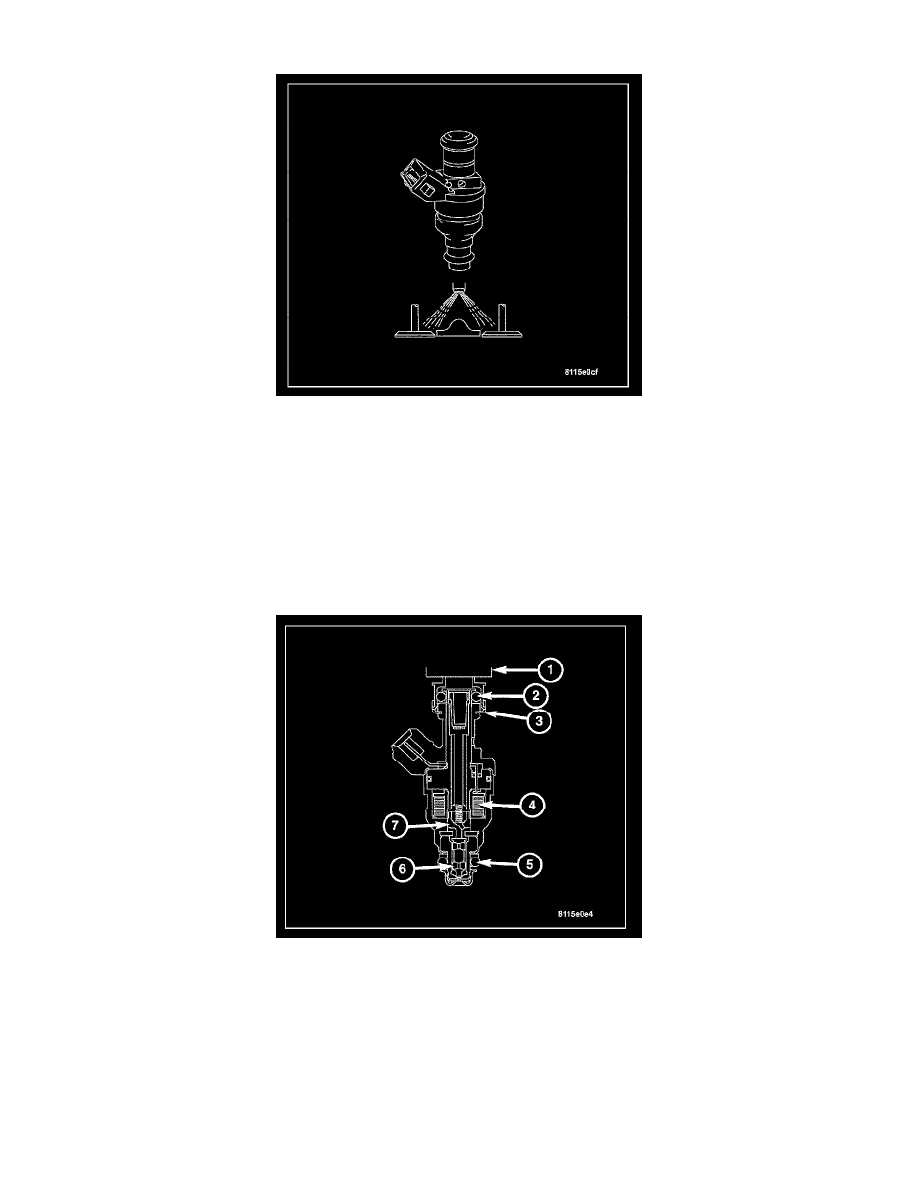Crossfire SRT-6 V6-3.2L SC VIN N (2005)

Fuel Injector: Description and Operation
The Fuel Injectors are positioned in the cylinder heads with the nozzle ends directly above the intake valve port. The Fuel Injectors are electrical
solenoids controlled by the Powertrain Control Module.
The Fuel Injector incorporates the following components:
-
Fuel Distribution Pipe (1)
-
Sealing Ring (2)
-
Retaining Clip (3)
-
Magnetic Coil (4)
-
Sealing Ring (5)
-
Nozzle Needle (6)
-
Magnetic Anchor (7)
The Fuel Injectors are 12 volt electrical solenoids. The injector contains a pintle that closes off an orifice at the nozzle end. When electric current is
supplied to the injector, the armature and needle move a short distance against a spring, allowing fuel to flow out the orifice. Because the fuel is under
high pressure, a fine spray is developed in the shape of a hollow cone or two streams. The spraying action atomizes the fuel, adding it to the air entering
the combustion chamber.
The Engine Control Relay which is contained in the Relay Control Module provides battery voltage to each injector. Injector operation is controlled by a
ground path provided for each injector by the PCM. Injector on-time (pulse-width) is variable, and is determined by the PCM processing all the data
previously discussed to obtain the optimum injector pulse width for each operating condition. The pulse width is controlled by the duration of the ground
path provided.
